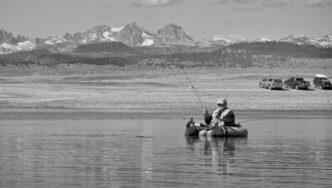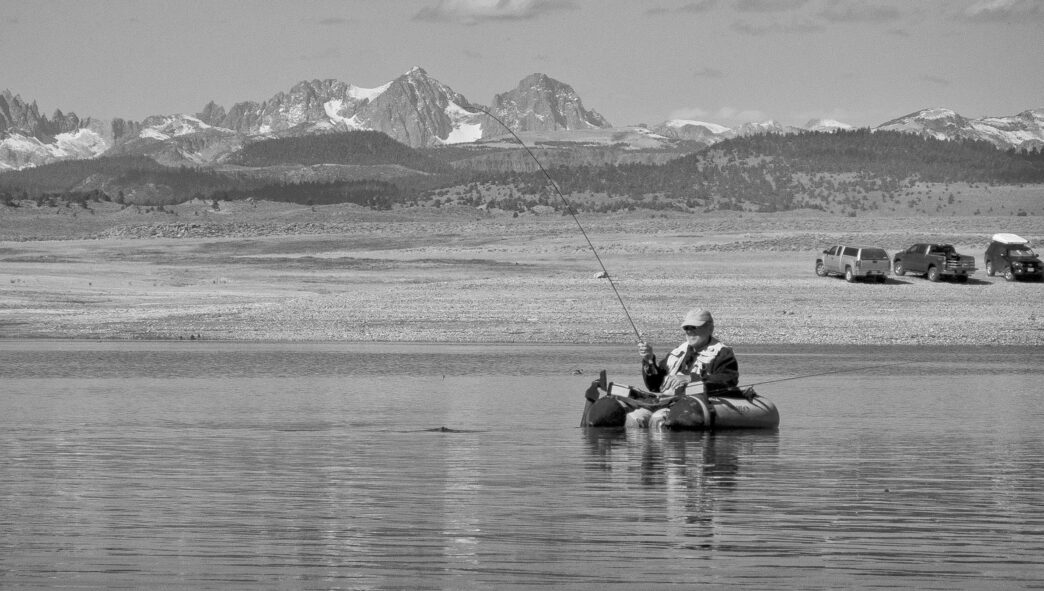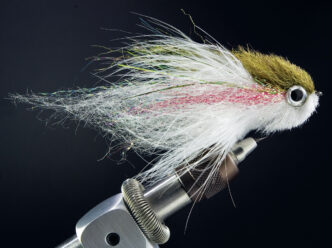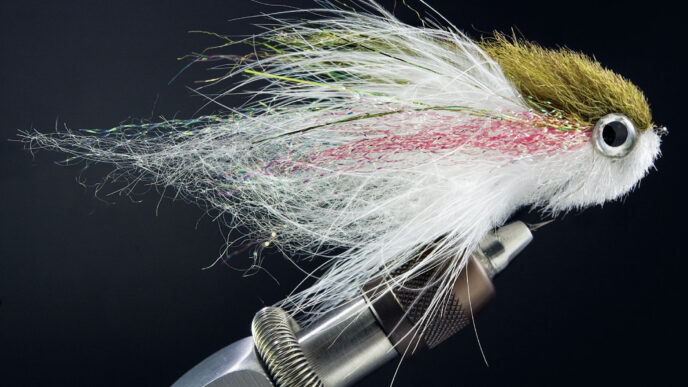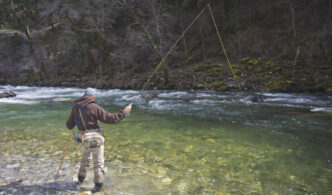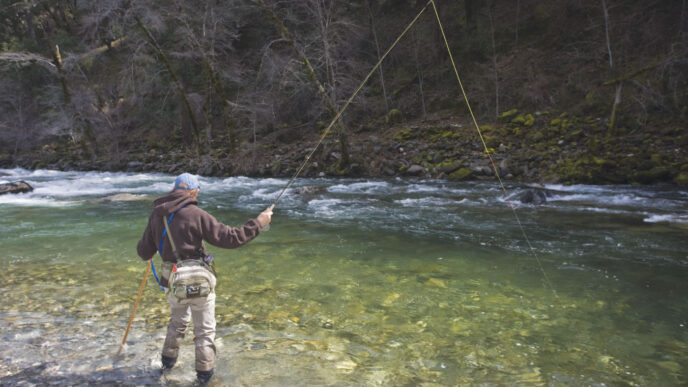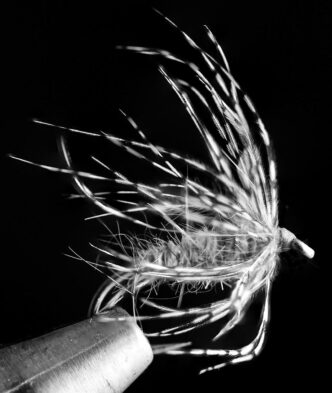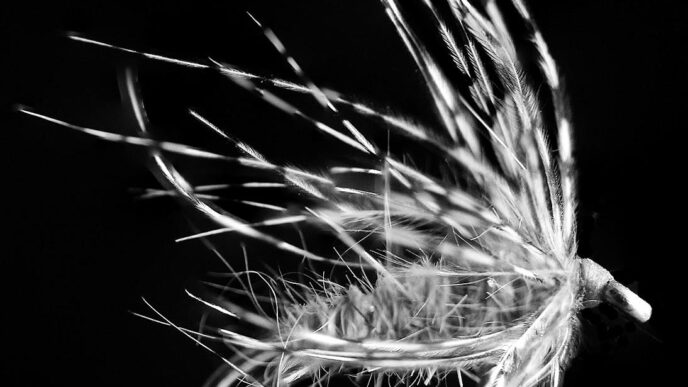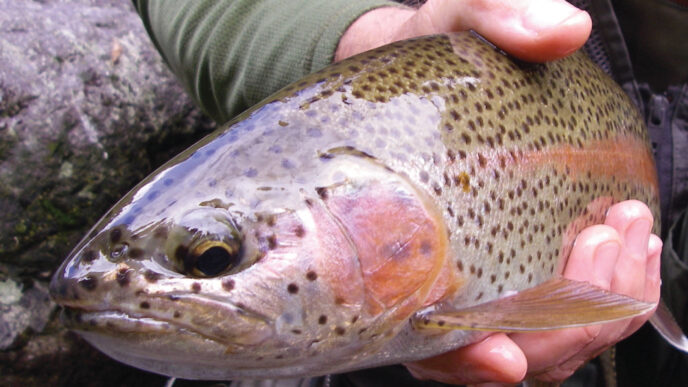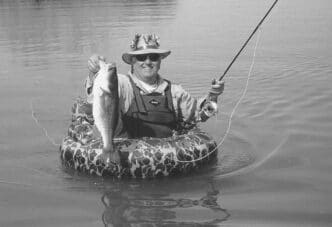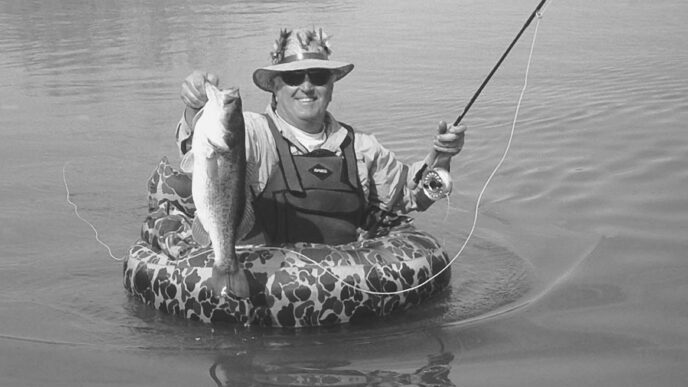It is amazing how often fellow fly-line anglers tell me they don’t fish lakes and reservoirs. “I just fish moving water. That’s what I like,” is the song they sing. The translation for this is: “I can’t read lakes and reservoirs or try new techniques, and I’m too busy to learn.” Or something like that, anyway.
I usually keep my mouth shut, figuring that their absence just leaves stillwater anglers like me more space and less competition. Still, if you haven’t yet fished lakes, let me pass along some general advice I’ve learned over the years about how to read water and catch fish in California’s many fine impoundments.
A decade ago, when I began to write Fly Fishing California Stillwaters, I probably spent only about 40 percent of my fishing time on lakes. But during the two years it took to research the book, 95 percent of my fishing was on still waters. Now I fish still waters more than 60 percent of the time.
Why Step Out of the Stream?
First, why lakes and reservoirs? The major reason is that bigger fish are found there. Think about it — it’s logical. Trout that live in streams and rivers spend their lives and most of their energy working against the flow in their search for food. They’ll hold in a “soft” spot with little current and then dash into faster currents to slurp up a bug or other morsel being carried along. Remember, food, food, food is what it is all about in a fish’s life. (Well, maybe with a little sex thrown in.)
That battle against the current, even holding in a slow-moving section of a stream, requires a constant expenditure of energy. That burns calories.
In still waters, fish can swim around as they wish in their search for food — slow, fast, whatever. If they want, they can lie in wait, all but motionless, putting out a minimum of energy. Less swimming, less energy expended, fewer calories burned, more intake used to get bigger — the result is clear: there are bigger trout in lakes than there are in most rivers and streams.
Take a place like Lake Davis. It’s loaded with food, not only the usual mayflies and caddisflies, but also a plethora of damselflies and dragonflies and snails, which are real mouthfuls for trout. A fish stocked in Davis at about 10 or 12 inches in the spring — Davis has almost no spawning, so its fish come from a Department of Fish and Game hatchery — will be 16 inches or so by autumn, already bulking up. By the next year, it’ll be pushing 20 inches and have assumed that football shape trout that gorge themselves tend to take on. Not only are they big, but they are usually feisty, putting up a great fight.
There are myriad lakes like this in California, places that support a healthy insect population, which in turn assures big fish. There are a dozen or so lakes in the northeastern corner of California near Alturas that become spectacular fisheries when the water is there, something that admittedly has been lacking in recent drought years. But others, such as Frenchman Lake, Lake Crowley, Bridgeport Reservoir, and Heenan Lake, to name just a few popular areas, are always havens for big fish.
For novices at the game of stillwater fly fishing, it may not sound that easy, but as you gain experience with a float tube or pontoon boat, you’ll be just like the trout — there are no currents to fight (unless fishing near an inlet), and you can move at any speed you want.
However, there is the wind. Finning a float tube against the wind can be tough, so keep that in mind, particularly on big lakes. Again, Davis is a good example. As with many of the larger lakes, particularly on the eastern slope of the Sierra Nevada, along about noon, a stiff wind usually picks up. As long as you keep close enough to shore to be comfortable, that’s fine. Just don’t get caught out in the middle of the lake when that breeze suddenly becomes a gale, or you’ll find yourself in trouble and faced with a tough slog to get home. It’s the same theory as wading dangerously deep — no fish is worth it.
As you get to know a lake, you’ll also learn where protected bays and inlets are sheltered from all but the strongest wind.
Reading Still Waters
There is little that is more frustrating for the beginning stillwater angler than standing on the shore gazing at a lovely lake and wondering where to toss a fly. Unlike moving water, there aren’t any riffles and runs, pools and rapids, or backwaters that logically hold fish.
Not to worry. Like many other things in this sport, it is a matter of learning new fly-fishing techniques.
There are a few basics that can act as a starting point in the learning curve. First, the fish are where the food is. Second, they seek protection from predators. Third, just as do fish in moving water, they take advantage of structure. So let’s deal with each of these.
Food. In moving water, food usually is washed into the trout’s feeding area. They hold in a “soft” area of current, such as in front of or behind a rock, move briefly to slurp up passing insects, then return to their spot and wait for the next opportunity. In lakes, because the water isn’t moving, fish need to cruise areas where food can be found. There’s a logical chain involved. The aquatic insects that trout eat live on or near plants, which are their main source of food. And plants need sunlight to grow. The sunlight that plants need, in turn, can’t penetrate deep into water — about 25 feet, if the water is reasonably clear — so you don’t get much plant life in very deep water.
Put all this together, and what you have is fish normally concentrated in shallower water, along the shore in areas of a lake where the underwater structure is close to the surface. Always look for them in and around places where there are reeds and other such plants growing out of the water. Those are hot spots for insect activity, and the fish know it. A well-known example is at Lake Crowley, where the Green Banks area toward the northwestern end has become a favorite for float tubers because of its aquatic plants. In that location, there are not only bugs, but also Sacramento perch, a favorite food for the lake’s big trout.
Protection. Fish are food, too, and they know it. For the most part, their enemies come from above, usually in the form of birds such as ospreys. Because of this, they tend to be skittish about cruising along just under the surface or in shallow water with a flat, unmarked bottom, where they can easily be seen. A windless day and calm, glassy-surfaced water means that trout are going to be hesitant to cruise near the surface. That’s why there can be a hatch and no sign of fish until a slight breeze riffles the water, and suddenly the trout will began to feed on or near the top. Those riffles break up the clarity and offer fish some protection from predators.
Gusting winds also can cause definite wind lines on the water — riffles on one side, a smoother surface on the other. Trout will hold under the riffles and move into the calmer water to pick off emerging insects. So fish those wind lines.
Along the banks, overhanging brush or downed trees protruding into the water offer protection, as do those rushes and tules growing out of the water. Heavy underwater plant growth, even if it doesn’t break the surface, gives fish a place to hide.
Always probe any area that offers protection to a fish, even if it means losing flies in the overhanging underbrush or in the limbs of a tree that has fallen into the water.
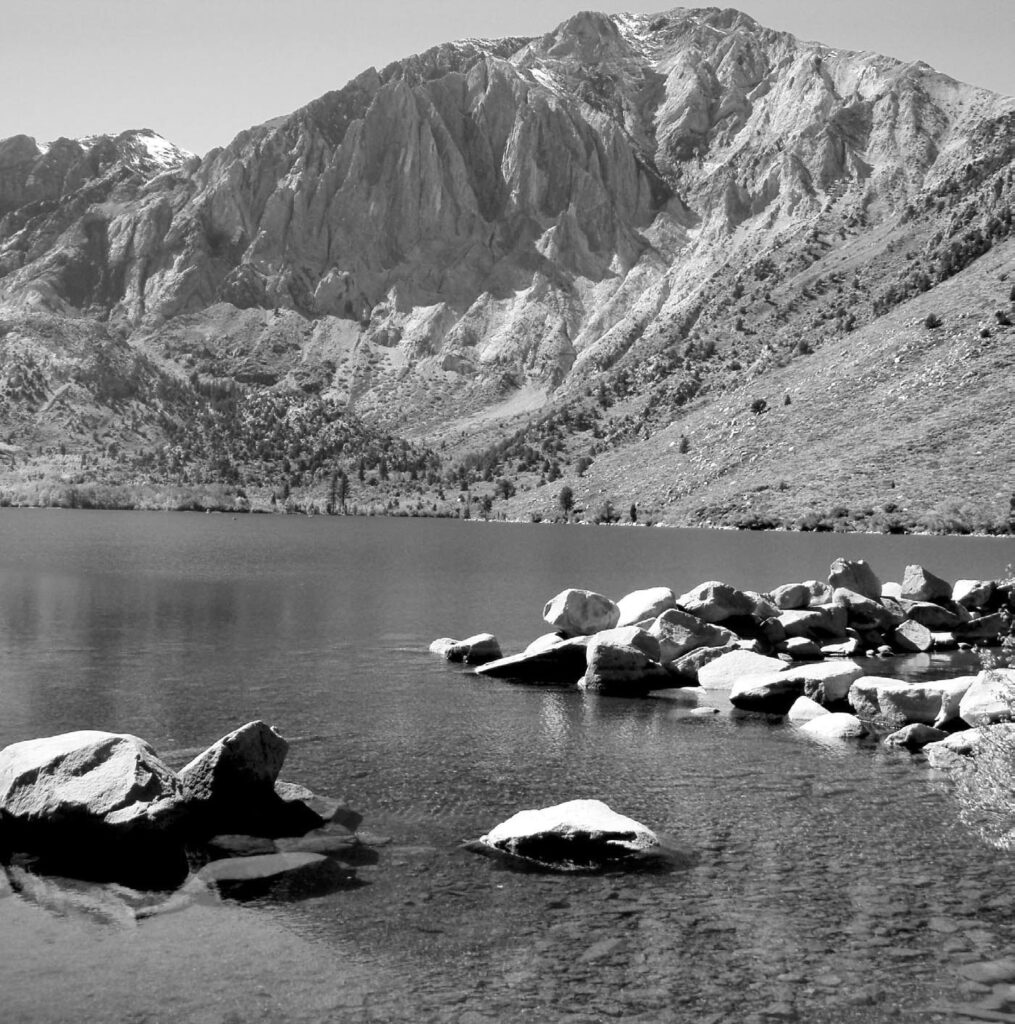
Structure. This goes hand-in-hand with food and protection. The question, of course, is how to determine structure when you can’t see it. Well, in many cases you can see it . . . but not from water level. So before you climb into your float tube and shove off, take the time to study what is above water. Better yet, if there is any surrounding area where you can get to and look down on the water, do it. It is amazing what you can see, particularly on a clear day. Often there are areas of underwater weed growth on high mounds or shallows that push out from shore. Better yet, you can see drop-offs, points of land, or piles of rocks that might attract fish. At times, you can spot fish, particularly if the bank rises sharply and you can stay well above the water.
Once you are on the water, you may not be able to see these things, so make certain you note landmarks to help you. On lakes that I don’t know, I usually sketch a rough map to guide me when I’m on the water. Yes, this process takes time and energy, but it is well worth it.
Here are some other hints that might help you pick the best areas to fish.
Many of California’s lakes are artificial impoundments. Whoever picked the spot, whether engineer or rancher, found an area that funneled to a low spot that could be dammed. Usually, the deepest part of the lake will be near the dam, which might be productive in late summer’s hot weather when the water is warming up and the fish tend to hold deep. Also, a ridge that leads to the water’s edge doesn’t stop there — it keeps going right on down. This could offer a spot where fish are holding. Or maybe there’s a rocky cliff going right down to the water. Chances are that plenty of rocks have fallen into the lake, creating structure that attracts fish.
The creek or river that feeds the lake was there before the reservoir was created, so it probably cut a channel through the meadow or valley that is now underwater. That channel, particularly in shallow lakes, can be a prime area for trout, so see if you can figure out where it is. This is a case where a small fish finder might help, although I have to admit I’m not a real fan of those sonar devices — for me, they just get in the way.
And, of course, another productive spot is where the river or creek comes into the lake. There are three major reasons why you can find fish there. First, trout will hold in the softer water along the edges of the inflowing current and pick off the food being washed into the lake. Second, when the water heats up to where the fish are having trouble getting enough oxygen, they will go into this moving water because even though it may be the same temperature, it carries more oxygen. Last, since trout go upstream during their spawn, they’ll often gather at the mouth before making the final push. This may hold true even when the inflowing water is too low for them actually to go to their spawning areas — hope springs eternal. It’s said that you can’t step twice into the same stream. This season, try stepping out of the stream and fishing one of the state’s many lakes and reservoirs.



